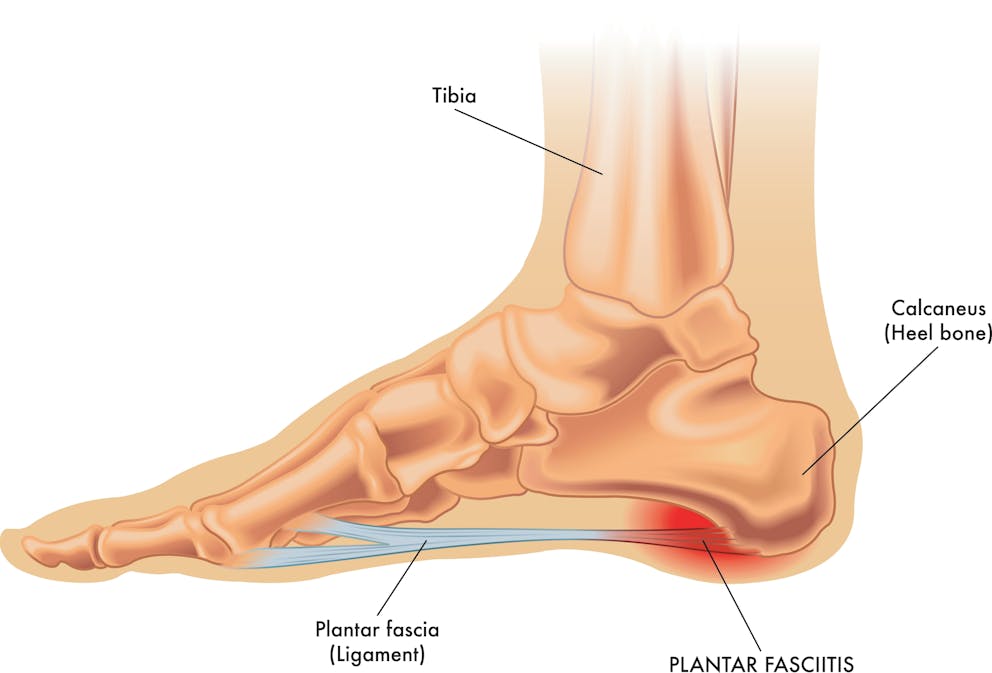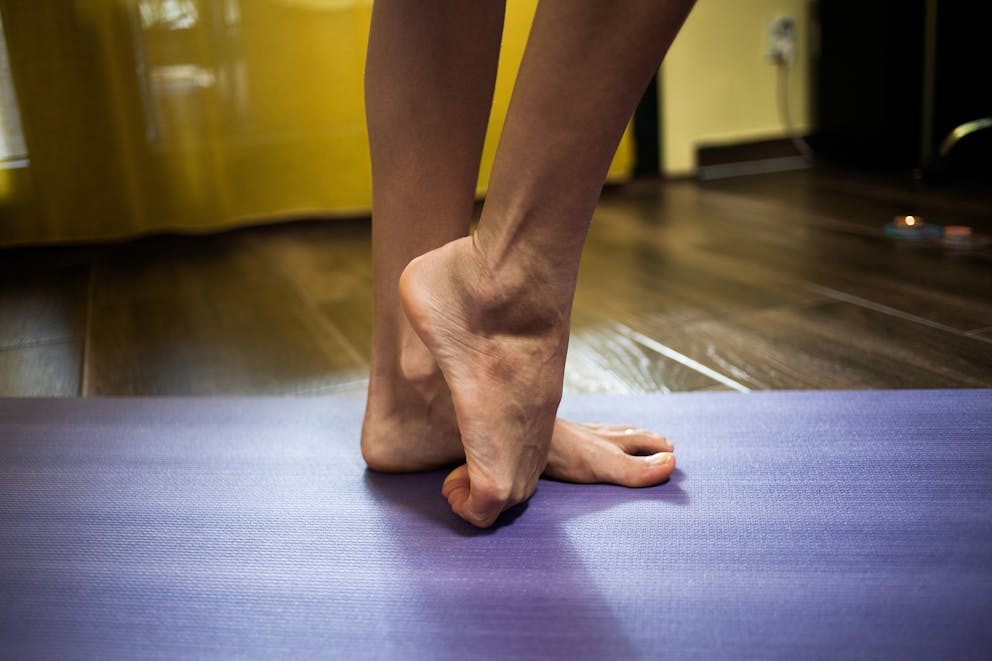How to Cure Plantar Fasciitis in One Week

How to Read Your Body
Learn to recognize common symptoms and uncover their underlying health issues
Understand the signs of nutrient deficiencies to manage your health
Explore the four metabolic body types and the core factors that influence them
Interpret your body's signals from head to toe to identify potential health concerns

How to Read Your Body
Learn to recognize common symptoms and uncover their underlying health issues
Understand the signs of nutrient deficiencies to manage your health
Explore the four metabolic body types and the core factors that influence them
Interpret your body's signals from head to toe to identify potential health concerns

How to Read Your Body
Learn to recognize common symptoms and uncover their underlying health issues
Understand the signs of nutrient deficiencies to manage your health
Explore the four metabolic body types and the core factors that influence them
Interpret your body's signals from head to toe to identify potential health concerns

How to Read Your Body
Learn to recognize common symptoms and uncover their underlying health issues
Understand the signs of nutrient deficiencies to manage your health
Explore the four metabolic body types and the core factors that influence them
Interpret your body's signals from head to toe to identify potential health concerns

How to Read Your Body
Learn to recognize common symptoms and uncover their underlying health issues
Understand the signs of nutrient deficiencies to manage your health
Explore the four metabolic body types and the core factors that influence them
Interpret your body's signals from head to toe to identify potential health concerns

How to Read Your Body
Learn to recognize common symptoms and uncover their underlying health issues
Understand the signs of nutrient deficiencies to manage your health
Explore the four metabolic body types and the core factors that influence them
Interpret your body's signals from head to toe to identify potential health concerns

How to Read Your Body
Learn to recognize common symptoms and uncover their underlying health issues
Understand the signs of nutrient deficiencies to manage your health
Explore the four metabolic body types and the core factors that influence them
Interpret your body's signals from head to toe to identify potential health concerns

How to Read Your Body
Learn to recognize common symptoms and uncover their underlying health issues
Understand the signs of nutrient deficiencies to manage your health
Explore the four metabolic body types and the core factors that influence them
Interpret your body's signals from head to toe to identify potential health concerns
Stretching is one of the most effective methods to get rid of plantar fasciitis, but you need to perform the proper stretches to avoid further injury to the plantar fascia.
Stretching the plantar fascia and calf muscle often won’t provide the instant relief you’re after. Discover how to cure plantar fasciitis in one week with the proper stretching technique.

What is plantar fasciitis?
Plantar fasciitis is a condition involving inflammation of the plantar fascia ligament—the sheath of connective tissue that connects the heel bone to the toes.
The plantar fascia acts as a shock absorber and plays an important role in providing arch support.
Plantar fasciitis is one of the most common causes of heel pain.
What causes plantar fasciitis?
Any activity that causes too much stress and tension to the plantar fascia can cause microtears in the tissue.
Repetitive tearing can lead to irritation, pain, and inflammation of the plantar fascia, resulting in plantar fasciitis.
The following risk factors can increase your chances of developing plantar fasciitis:
Jobs that require long hours of walking or standing
Obesity and excess weight can place extra stress on the plantar fascia
Foot mechanics
Aging
Poor diet
A tight calf muscle or tight Achilles tendon
According to this case-control study from The Journal of Bone and Joint Surgery, reduced ankle dorsiflexion, obesity, and work-related weight-bearing were the most important risk factors for plantar fasciitis.

What are the symptoms of plantar fasciitis?
The most common symptom of plantar fasciitis is foot pain, typically in the heel, but it can also extend up through the bottom of the foot.
Plantar fasciitis is often described as a stabbing pain and may also be accompanied by stiffness or swelling. You may notice that the pain is worse upon waking up, after standing for long periods of time, or after exercise.
Untreated chronic heel pain can affect how you walk and lead to injury and pain in the back, hips, knees, and legs.
How is plantar fasciitis diagnosed?
If you’re experiencing symptoms of plantar fasciitis, consult with a healthcare professional to determine the best mode of treatment.
Typically, your doctor will do a physical exam on your feet to identify the exact location of the pain and check the level of tenderness.
They may ask you to flex your foot while applying pressure to the plantar fascia to see if the pain worsens. They also check if the affected area has any redness or swelling.
Your doctor may evaluate the following:
Balance
Coordination
Sense of touch
Muscle tone
Reflexes
To treat plantar fasciitis at home, watch this video!
How to cure plantar fasciitis in one week
Stretching can heal even the most severe cases of plantar fasciitis in one week! Before performing this stretch, determine your current pain level so that you can compare it with your pain level after stretching.
“One of the biggest mistakes people make with plantar fasciitis is to stretch their calf or foot,” explains Dr. Berg.
It’s common to stretch the calf muscles and plantar fascia or massage the bottom of the foot in an attempt to relieve pain.
However, if you are suffering from plantar fasciitis, the plantar fascia is inflamed and has micro-tears. Stretching the plantar fascia can cause more strain and further injure the muscle.
To reduce pain, you’ll want to stretch your toes downward and relax. This stretches the muscles and tendons in the top of the foot as well as the anterior tibialis in the shin. Repeat the stretch ten times.
Using this technique increases blood flow, reduces inflammation, and helps relax the plantar fascia.
This stretch can provide lasting relief—you should notice significant improvement from pain almost immediately.
Using this technique regularly can also help improve flat feet, reduce other types of foot pain, and lower your risk of developing plantar fasciitis again.
 What if this plantar fasciitis home remedy doesn’t work?
What if this plantar fasciitis home remedy doesn’t work?
According to this article published in the American Family Physician, 90% of patients will improve with natural treatments, which include stretching, rest, activity modifications, and self-massage with ice.
If you find that this stretch does not reduce pain, you may have an underlying condition like arthritis or gout.
There are a range of treatments that are commonplace for plantar fasciitis. Steroids, injections, orthotic inserts, and surgery are a few of the typical treatments.
If the stretching technique does not relieve discomfort, try changing your diet to avoid the harmful side effects of some of these treatments. Oftentimes, the conventional treatments of plantar fasciitis do not solve the problem.
How do you prevent plantar fasciitis?
Plantar fasciitis can be very painful, but there are several things that you can do to prevent it from recurring.
Try the following:
Regularly perform leg and foot stretches
Minimize high-impact activities
Choose the proper shoes if you work for long hours on your feet
Maintain a healthy body weight
Ensure adequate vitamin D intake through sunlight or vitamin D3 supplement
Try keto and intermittent fasting to help reduce inflammation
Physical therapy can be helpful if your plantar fasciitis is related to an issue with your foot’s arch or structure. A physical therapist can also help if your foot pain is related to any foot injuries.
Inflammatory foods like refined carbs, refined sugar, and refined seed oils cause a significant amount of inflammation in the body.
Avoid vegetable oils, including soy oil, corn oil, canola oil, and cottonseed oil. Highly inflammatory oils can contribute to plantar fasciitis and cause chronic health problems like heart disease and cancer.
Weight gain and obesity also contribute to plantar fasciitis and heel pain. To prevent plantar fasciitis, focus on getting healthy and losing weight.
Intermittent fasting can also help reduce inflammation associated with frequent eating.

Key takeaways
One easy stretch can provide lasting pain relief from plantar fasciitis.
Don’t waste time with orthotic shoe inserts that won’t work or with steroid medications that come with a long list of side effects.
Address the root cause of your pain, and it’s possible to cure plantar fasciitis in one week.
FAQ
1. How can I cure plantar fasciitis in one week?
Performing a stretch on the opposite muscles can provide fast relief from plantar fasciitis. Instead of stretching the plantar fascia, which can inhibit the healing process, stretch your foot downwards. Most people experience relief from plantar fasciitis after performing this stretch every day for a week.
2. What is the quickest way to get rid of plantar fasciitis?
Stretching the toes downward and focusing on the muscles opposite the plantar fascia can quickly get rid of the pain associated with plantar fasciitis. Oftentimes, people stretch the calf muscle and the plantar fascia, causing further pain and injury to the area.
3. Can plantar fasciitis heal in a week?
Yes! If you want to heal plantar fasciitis quickly, perform the stretch demonstrated in the above video. Stretch your toes downward and avoid stretching the plantar fascia. Perform this stretch every day for a week, and your pain should go away. If symptoms persist, you may have an underlying issue like arthritis or gout.
4. What is the best painkiller for plantar fasciitis?
Performing the stretch demonstrated in the video above will leave you pain-free in as little as a week. Anti-inflammatories, including ibuprofen, are often prescribed to provide relief from plantar fasciitis pain, but stretching properly can eliminate the need for painkillers.
5. What should I avoid if I have plantar fasciitis?
If you have plantar fasciitis, avoid stretching the plantar fascia. This can cause further micro-trauma to the muscle, causing pain and swelling to increase. Avoid standing for prolonged periods and avoid high-impact exercise.
It’s also helpful to avoid inflammatory foods, which may contribute to the development of plantar fasciitis. Focus on getting healthy and losing excess weight to reduce the stress placed on the plantar fascia.
6. What causes plantar fasciitis?
Any activity that causes too much stress and tension on the plantar fascia can result in small tears. Repetitive tearing can lead to irritation, pain, and inflammation of this tissue. Aging, obesity, and poor diet can also contribute to plantar fasciitis.
7. How do I know if I have plantar fasciitis?
Heel pain is the most common symptom of plantar fasciitis. You might also feel pain in the center of your foot. Oftentimes, the pain is worse when waking up or after standing for long periods. Consult with a healthcare professional to determine if you have plantar fasciitis.
8. How do I prevent plantar fasciitis?
Proper stretching can improve and prevent plantar fasciitis. If you are overweight, focus on getting healthy and losing weight to reduce the pressure on the plantar fascia. A healthy, anti-inflammatory diet is the best way to prevent plantar fasciitis.
9. Can your diet affect plantar fasciitis?
Absolutely. Inflammatory foods like refined sugars, refined carbs, and refined oils can all cause inflammation, which contributes to plantar fasciitis. Foods high in oxalates—like spinach—can create oxalate crystals that may accumulate in your feet, causing heel pain and plantar fasciitis.
A buildup of uric acid can create uric acid crystals, which can also settle in the plantar fascia and cause pain. Reducing your carb intake, increasing your vegetable intake, and supplementing with potassium citrate can help reduce uric acid in the body.
Previous blog
A Simple Fix for GERD and Acid RefluxTags

Popular
08/21/2024
55K views
02/23/2025
46.3K views
11/18/2024
277.5K views
03/18/2024
11/21/2022




